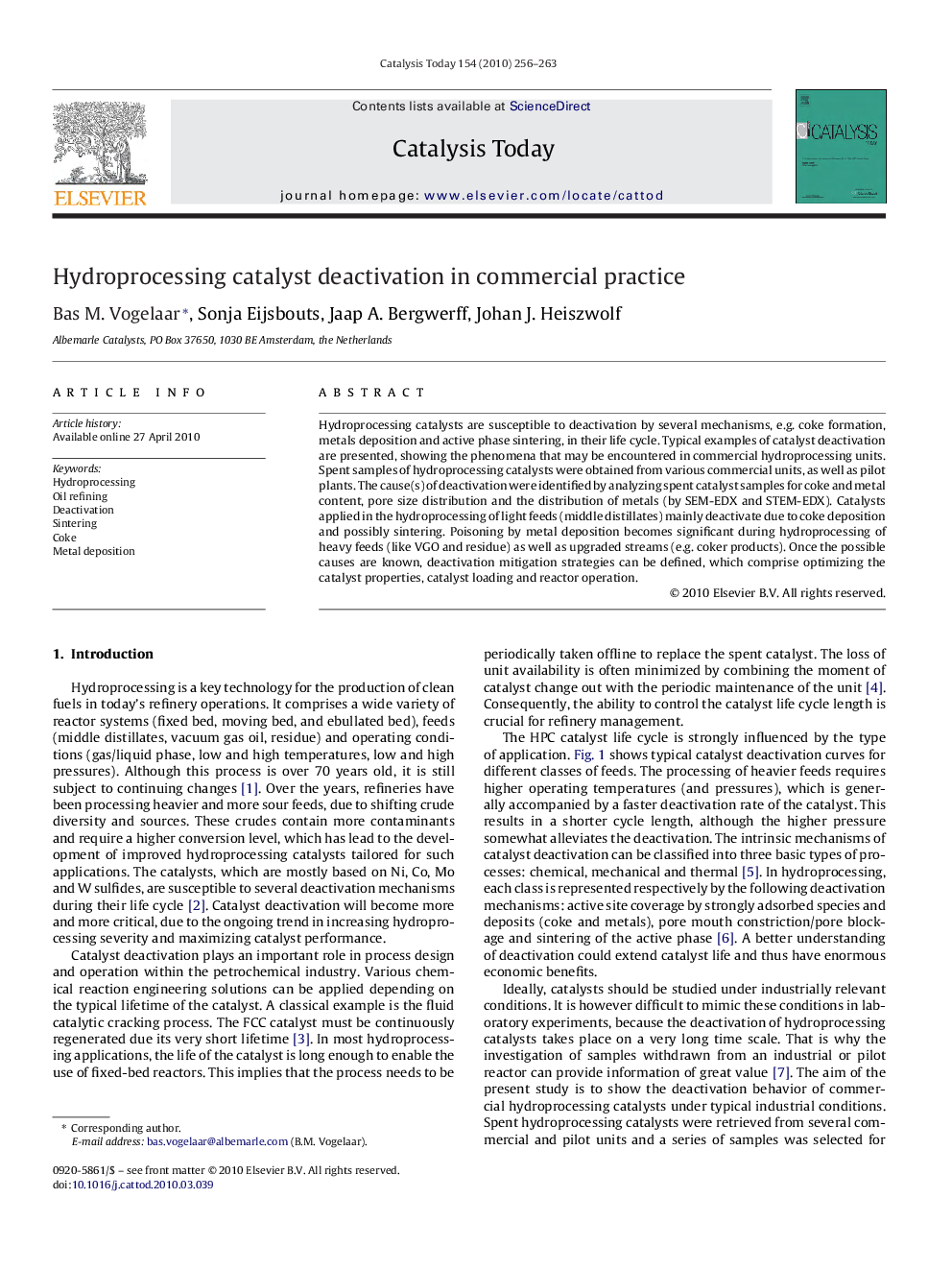| کد مقاله | کد نشریه | سال انتشار | مقاله انگلیسی | نسخه تمام متن |
|---|---|---|---|---|
| 56280 | 47080 | 2010 | 8 صفحه PDF | دانلود رایگان |

Hydroprocessing catalysts are susceptible to deactivation by several mechanisms, e.g. coke formation, metals deposition and active phase sintering, in their life cycle. Typical examples of catalyst deactivation are presented, showing the phenomena that may be encountered in commercial hydroprocessing units. Spent samples of hydroprocessing catalysts were obtained from various commercial units, as well as pilot plants. The cause(s) of deactivation were identified by analyzing spent catalyst samples for coke and metal content, pore size distribution and the distribution of metals (by SEM-EDX and STEM-EDX). Catalysts applied in the hydroprocessing of light feeds (middle distillates) mainly deactivate due to coke deposition and possibly sintering. Poisoning by metal deposition becomes significant during hydroprocessing of heavy feeds (like VGO and residue) as well as upgraded streams (e.g. coker products). Once the possible causes are known, deactivation mitigation strategies can be defined, which comprise optimizing the catalyst properties, catalyst loading and reactor operation.
Journal: Catalysis Today - Volume 154, Issues 3–4, 15 September 2010, Pages 256–263